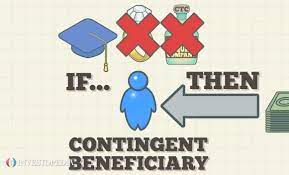In today’s modern world, insurance has become essential, providing a safety net against unforeseen events and financial setbacks. Whether it’s health insurance, auto insurance, or home insurance, having proper coverage ensures peace of mind and protection for ourselves and our valued assets. However, one crucial aspect that individuals and families often consider is the insurance cost. Understanding the average monthly insurance cost is essential, as it helps in budgeting and making informed decisions about the type and extent of insurance coverage needed. For update, this article provides an overview of the average insurance cost per month in June 2023, giving you the current insurance cost for a car and helping you navigate the complex world of insurance.
Average Insurance Cost Per Month
The average insurance cost per month can vary greatly depending on multiple factors such as the type of insurance, the coverage level, the individual’s age and health condition, and even the location. For example, for health insurance, the average cost per month can range from around $400 to $1,800. It depends on factors such as age, whether the individual is purchasing coverage for themselves or a family, and the state’s regulations. On the other hand, auto insurance can cost, on average, around $100 to $200 per month, again depending on numerous factors such as the individual’s driving record, the type of vehicle, and the coverage level.
However, note that these are just average costs and each individual’s insurance cost can vary greatly. Insurance companies calculate premiums based on various risk factors associated with the individual. So, shop around and compare quotes from different insurers to get the best coverage at the most affordable price. It is also worth exploring options such as bundling multiple types or adjusting deductibles and coverage limits to find a balance between cost and level of protection.
Average Insurance Cost Per Month For A Car
The average insurance cost per month for a car can vary significantly depending on several factors. These include the type of car, the driver’s age and driving record, the location, and the coverage options chosen. On average, however, car insurance can cost between $100 to $200 per month.
One of the main factors that influence the cost of car insurance is the type of car. Luxury or sports cars, for example, tend to have higher insurance costs due to their higher market value and increased risk of theft or accidents. Additionally, a driver’s age and driving record can also impact their insurance premiums. Younger drivers and those with previous traffic violations or accidents may be at a higher risk, resulting in higher insurance costs. Lastly, the location can play a role in determining insurance costs. Areas with higher rates of accidents or vehicle theft may have higher insurance premiums.
Car owners need to know the potential insurance costs associated with their vehicles. They should compare quotes from different insurance providers to find the best coverage at an affordable price. Additionally, maintaining a clean driving record and considering optional coverage options. This includes a higher deductible or usage-based insurance programs, may help reduce insurance costs.
How Much Do Most People Pay For Insurance A Month?
The average cost of insurance varies depending on age, location, coverage type, and individual circumstances. However, it is essential to consider different insurance policies when discussing monthly payments. Here is a breakdown of the average monthly costs for some common types of insurance:
#1. Auto Insurance
In the United States, the average cost of car insurance starts from $100 to $200 per month. This can vary based on factors like the driver’s age, driving history, type of vehicle, location, and coverage limits.
#2. Health Insurance
Health insurance costs vary significantly based on age, location, plan type, and coverage level. According to data from eHealth, the average monthly premium for an individual health insurance plan in the United States is around $440, and for a family plan, it is approximately $1,168.
#3. Homeowners or Renters Insurance
The cost of homeowners or renters insurance depends on the location, property value, coverage limits, and the deductible amount. On average, homeowners insurance can range from $50 to $200 per month. While renters insurance may cost around $15 to $30 per month.
#4. Life Insurance
The cost of life insurance can vary widely based on some factors. Generally, the younger and healthier one, the lower their premiums will be. However, term life insurance is the most common and affordable type. It protects for a specific period, usually 10, 20, or 30 years.
The average monthly premium for a healthy individual in their 30s or 40s for a coverage amount of $250,000 to $500,000 can range from $20 to $50. Younger individuals may pay even less.
Whole life insurance, on the other hand, is a permanent policy that provides coverage for your entire life. The premiums are typically higher than those for term life insurance. For healthy individuals in their 30s or 40s, the average monthly premiums for coverage amounts ranging from $100,000 to $500,000 can range from $100 to $300.
How Much Do Americans Pay For Insurance?
In the United States, the cost of insurance can vary significantly depending on several factors. One of the main types of insurance Americans pay for is health insurance. The average cost of health insurance in the US can range from a few hundred dollars to several thousand dollars per month. That’s depending on factors such as age, location, and coverage level. Many Americans receive health insurance through their employers, which often helps lower the rate. However, those who are self-employed or do not have access to employer-sponsored plans may have to purchase health insurance individually, which can be more expensive.
Apart from health insurance, Americans also pay for auto, homeowners, and life insurance. The cost of these insurances can also depend on the individual’s driving history, property value, and age and health status, respectively.
How Much Is Health Insurance In America Per Month?
The cost of health insurance in America can vary depending on age, location, type of plan, and the insurance provider. On average, the monthly premium for an individual health insurance plan in the US can range between $200 to $600.
However, this is just an estimate, and the actual cost can be higher or lower based on the above factors. The cost also increases if the plan covers a family or multiple individuals. Additionally, deductibles, copayments, and out-of-pocket expenses can further impact the overall cost of health insurance coverage in the US.
How Much Is A 100 000 Whole Life Insurance Policy?
A $100,000 whole-life policy will probably cost between $100-$1000 monthly, depending on various factors such as your age.
What Age Can You Get Life Insurance?
One common question about life insurance is about the age an individual can obtain coverage. The good news is that there is no specific age limit. In most countries, including the United States, life insurance companies generally offer protection to individuals as young as 18.
However, the cost and availability of life insurance can vary in different age brackets. Insurance premiums generally increase as you get older since the likelihood of death also increases. For young people, life insurance policies tend to be more affordable as they pose a lower risk to the insurance company. In general, purchase life insurance at a younger age when you are healthier and have fewer pre-existing medical conditions.
That said, getting life insurance at any age, as long as you are eligible, can still be beneficial. Even if the premiums are higher, having life insurance provides peace of mind and ensures they protect your loved ones financially.
How Much Money Can You Get From Life Insurance?
The amount of money you can get from life insurance depends on various factors such as the type of policy you have, the premium you pay, and the coverage duration. Term life insurance, which provides coverage for a specific period, generally offers lower premiums and payouts than whole life insurance.
The payout amount or death benefit, is typically predetermined when you purchase the policy, and it goes to your beneficiaries upon your death. This death benefit amount can range from a few thousand dollars to millions of dollars, depending on your coverage amount. Then, the final payout is usually tax-free for the beneficiaries and it covers funeral expenses, debts, or provide financial security for your loved ones.
What Is The Most Expensive Life Insurance?
When it comes to life insurance, the most expensive option is typically whole life insurance. Whole life insurance provides coverage for the time of an individual’s life, rather than a set term. The premiums for whole life insurance tend to be higher than those for term life insurance because the policy not only provides a death benefit but also accumulates cash value over time. You can borrow the cash value against it or use it to pay premiums, making whole life insurance a more comprehensive and long-term option. Additionally, the higher premiums are because whole life insurance policies guarantee a death benefit payout, regardless of when the insured passes away.
Another factor contributing to the high cost of whole life insurance is the inclusion of an investment component. Part of the premium payments go towards investments, such as stocks or bonds, in a tax-deferred account. This investment feature allows the policy to build cash value over time, which can be accessed by the policyholder. However, it is important to note that the returns on these investments are not always guaranteed, and the insurance carrier may set a minimum rate of return. Overall, while whole life insurance may be the most expensive option, it provides a lifetime of coverage and provides a financial asset that can be utilized during the policyholder’s lifetime.
Conclusion
In conclusion, the average insurance cost per month has witnessed notable changes compared to previous years. Several factors contribute to these fluctuations, including changes in economic conditions, industry regulations, and individual policyholder requirements. However, note that insurance costs can vary on some factors such as age, location, type of insurance, and past claims history.






